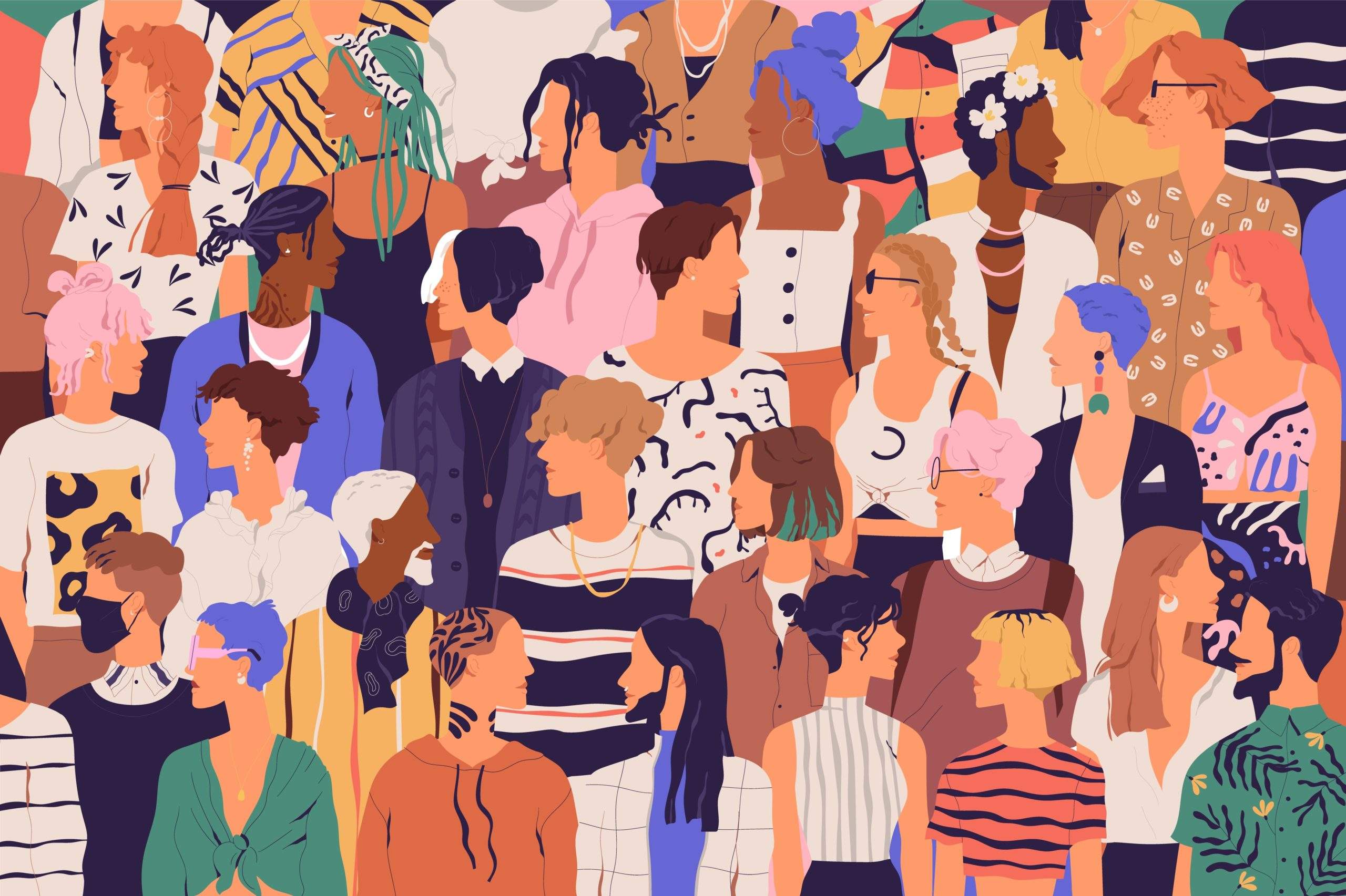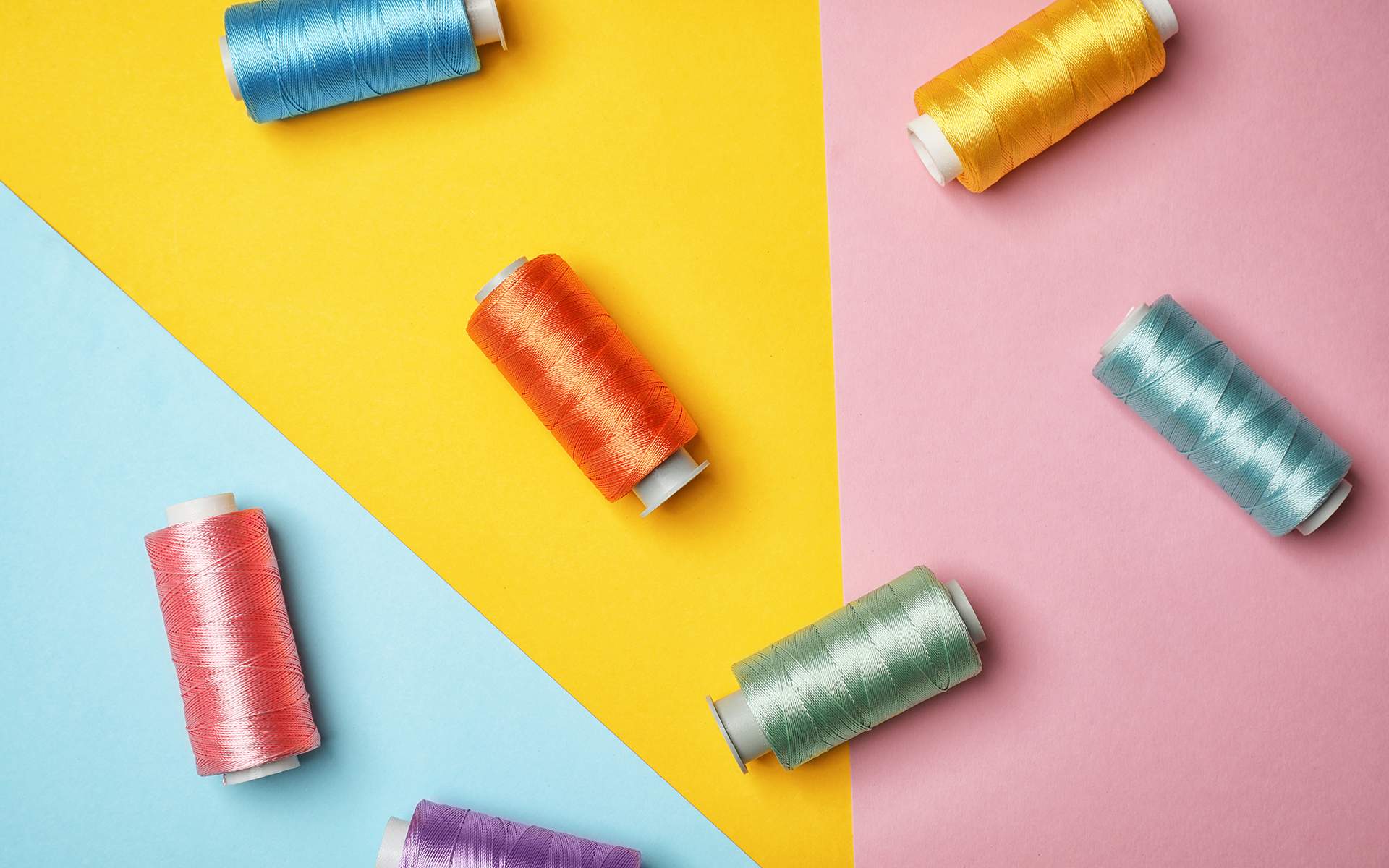Fashion is a pervasive market worth billions that affects every person who wears clothes, works in the industry, or works in relation to the industry. This means that if we can understand the relationship between humans and the clothes we wear, we gain insight into the behavior of everyone who wears them, including ourselves.
“[Clothing] is so close to us it becomes part of our identity,” says behavioral psychologist Dr. Carolyn Mair, author of The Psychology of Fashion and founder of psychology.fashion. Mair pioneered the world’s first master’s degrees in psychology for fashion and is part of a relatively small group of people who have carved out careers at the intersection of fashion, design, economics, and psychology.
“What we wear is a reflection of how we want to be seen,” she says, although, “that isn’t the same as how we are seen, because that depends on the viewer.”
Why First Impressions Matter
Picture yourself on a first date at a relatively fancy restaurant, the kind with candle light and wine service. You’re sitting at a table waiting for your date to arrive and when they walk in the door, they’re wearing plain white, tie-up Balenciaga sneakers. What does that tell you about this person?
If you’re a follower of high-end streetwear, you’re likely familiar with the fact that these shoes cost over $1,000 USD and that the word “Balenciaga” printed in clear black lettering on the sides of the shoes means that they’re designer. Overall, you’ll likely assume that this person is from a higher economic status, or at least that they try to communicate wealth.
But If you’re not immersed in the world of designer streetwear, perhaps you would personally opt for dress shoes on this occasion and you might be surprised if someone showed up in plain white sneakers. You may even be unimpressed.
When we meet someone new, we construct our first impression of them in under one second based on how they look, Mair explains in a 2020 blog post. If we like the way someone looks, we imbue them with characteristics like “successful,” “pleasant” and “intelligent,” without knowing anything about them other than what they look like. From there, we tend to seek traits that back up our initial judgment. In psychology, this is called the Halo Effect, “and once generated, it is hard to change,” Mair says.
It gets even more complicated when you consider that our behavior is influenced by the way someone else acts in response to us, and vice versa. Our interactions are cyclical, so our first impression and how we act based on that impression can really make a difference in our ability to connect with someone.
“It can make communication difficult, particularly if the person who is wearing the clothes has this sense of them making an obvious statement. But, in fact, clothing isn’t really obvious unless it has a slogan on it,” says Mair. “It can be like speaking a different language.”
Clothing and Cognitive Function
We develop these associations between clothing and certain human traits, professions, or ideas over the course of our lives as certain associations are reinforced by our interactions, what we’re taught and what we observe.
In 2012, psychologists at Northwestern University ran a study where they predetermined that lab coats are associated with attention and care. They had some participants wear lab coats while others didn’t and when they all did attention tests, those wearing the lab coats out-performed those who were not.
In another experiment, the psychologists gave every participant an identical lab coat but told some that their coats were doctors’ coats and told others that they were wearing painters’ coats. This time, the people who wore the supposed doctors’ coats performed better on attention tests than the others. The researchers concluded that both the experience of wearing certain clothes and the symbolic meaning that we assign to clothes affects our psychological processes. This concept is called enclothed cognition.
Another example of enclothed cognition is when we repeatedly receive compliments on a certain item of clothing. Our association with this piece of clothing is that other people like how we look and “that item of clothing becomes something that gives us some power,” says Mair Although, she’s quick to clarify that clothing does not have inherent power to change the way we feel. After all, clothes are simply pieces of cloth of various shapes, colors, and textures. It’s the associations that make the difference and while this can be helpful when we get dressed for a job interview, it’s important not to put too much stock in the power of the clothing.
Clothing and Self-Esteem
We can be particularly mindful of this when it comes to social media, Mair says. If you’re currently in a good place with your mental health, there’s likely not much harm in associating a certain item with a feeling like happiness and posting on social media about your “happy dress,” for example. But messaging that equates objects like clothes with mental health can be harmful when people are dealing with deeper mental health issues. Clothing can help us feel empowered, authentic, and send a message, but it can’t inherently provide mental wellness.
“Your self-esteem is a measure against the norms of society,” Mair says, which means that the messaging we receive about the norms is important.
In the fashion industry, the messaging has been skewed to cater to a mainly young, white, eurocentric, and thin audience in its imagery and products. People who don’t fit that image are marginalized with less opportunity to communicate identity and feel empowered with the help of clothing. This can make people who aren’t represented feel like the product and high-end fashion culture of luxury, money, and parties aren’t for them, adding barriers for those who already face marginalization on a systemic level outside of the fashion industry. The industry is making strides in the right direction, but there’s still work to be done in offering diverse and realistic representation.
Try a Mindful Mirror-Gazing Practice
“Our desire to be seen and reflected is basic and innate,” says motivational psychologist Tara Well. “As children, we learn to understand ourselves through the reflections of those around us.”
The mirror can be a valuable tool for maintaining that connection with yourself regardless of the clothes you wear. Tuning into your image can help you stay present to your emotions. In our reflection, we can see and hear our self-criticism with exquisite accuracy and then mirror meditation provides a choice, and a practice, to treat ourselves with kindness.
A 5-Step Mirror Meditation from Tara Well
- Set the space and intention. Choose a well-lit distraction-free space where you can position a mirror so that it’s freestanding and you can see into your eyes without straining or leaning forward. Sit on a meditation cushion or on a chair with both feet on the ground. Set a timer for 10 minutes. Have no goals other than to sit with yourself for the allotted time.
- Tune into your breathing. Begin with your eyes closed. Tune into your breath. Are you holding your breath or breathing rapidly? Take a few slow, deep belly breaths. Then breathe regularly and naturally, just observing the movement of your belly, ribcage, and collarbones as you inhale and then gently contracting your collarbones, ribcage, and belly as you exhale. Notice any areas of tension in your body, especially your face and shoulders, then imagine sending your breath to relax those areas and letting tension melt away.
- Begin to gaze into your eyes. Notice if your breathing changes when you first look at yourself. Come back to full steady breathing. Notice the quality of your gaze: Is it harsh or soft? Try to soften your gaze as much as you can. If you notice yourself hardening by focusing on a detail or a flaw in your appearance—breathe until you feel yourself softening again.
- Observe your critic. If your initial reaction to looking at yourself is critical, notice your eyes as you look at yourself in this exacting, maybe even harsh or cold way—see if you can flip your attention from the person (or image in the mirror) that you are scrutinizing to seeing the person who is underneath receiving that scrutiny—that’s who you really are. How does that part of you feel about receiving those critiques?
- Notice where your attention goes and associated feelings. Gaze at your reflection, staying open to whatever arises. Notice any sensations or emotions that come up and allow them to simply be there without judgment or interpretation. Let your feelings and thoughts simply pass by as you breathe, relax your body, and gaze at yourself with no goal other than to be present with yourself. Notice if your attention becomes very narrow and exacting, and if so, see if you can expand it back to seeing your whole body, your whole self, and notice any emotions on your face. Observe this expansion and contraction of your attention and the thoughts and images that come to mind. Just noticing where your attention goes and any feelings that are associated with it without judgment. Hold a kind intention toward yourself as you do the practice. You may be surprised how much your view of yourself can change.
READ MORE
How Sewing My Own Clothes Helped Me Love Myself
Mindful’s managing editor Stephanie Domet on how to align with your values, love yourself more, and have a truly intentional wardrobe, just by taking fashion into your own hands.
Read More
A Loving-Kindness Practice to Foster Acceptance
We spend a lot of our time and energy wishing our lives were different or “better.” Loving-kindness helps us accept ourselves exactly as we are.
Read More
Your Brain Predicts (Almost) Everything You Do
Cutting-edge neuroscience shows that your brain isn’t built for thinking—it’s made to predict your reality, and you have more power over that perception than you might think.
Read More











